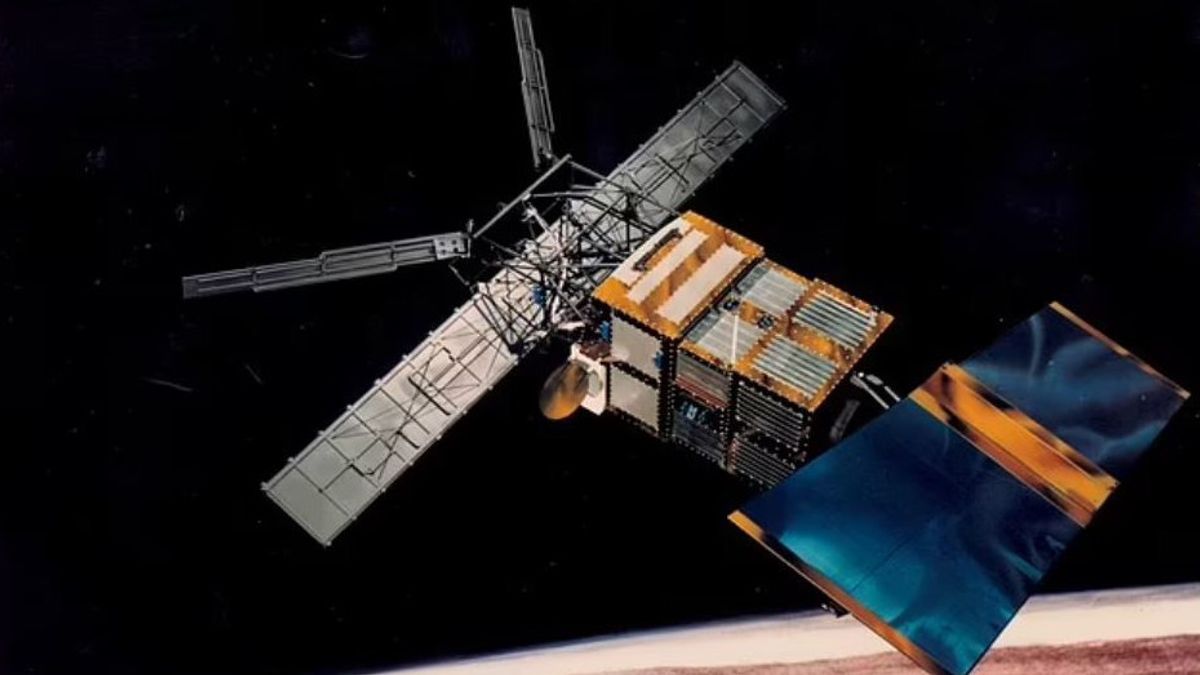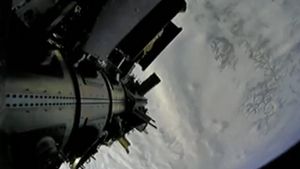
JAKARTA - The satellite operated by the European Space Agency (ESA), ERS-2, will eventually fall back to Earth this week after orbiting our planet for nearly 30 years.
ERS-2, launched from French Guiana in 1995, weighs slightly more than 5,000 pounds - about the same as an adult rhino.
ESA estimates that this satellite will re-enter Earth's atmosphere at 11:14 GMT on Wednesday 21 February.
While experts do not yet know where the satellite will land, ESA says that the annual risk of a human being being even only being injured by space debris is about one in 100 billion.
ERS-2 (European Remote-Sensing Satellite 2) was launched on April 21, 1995. At that time, this was the most advanced Earth observation vehicle ever developed and launched by Europe. Together with the nearly identical ERS-1, this satellite collects data on Earth's surface, oceans, and Earth's ice cover.
This satellite is used to monitor natural disasters such as severe flooding or earthquakes in remote parts of the world. In 2011, ESA retired ER-2 and started the deorbiting process - and now the satellite is scheduled to re-enter the atmosphere and start burning.
ERS-2 launched with a mass of 5,546 pounds (2,516 kg). Now, after the fuel runs out, the current mass is estimated to be around 5,057 pounds (2,294 kg). ESA says that there is a level of uncertainty in the prediction of re-entry by 15 hours.
This means the satellite can re-enter 15 hours before or after 11:14 GMT on Wednesday - although 11:14 GMT is the best estimate of them.
There is no longer any way to control the satellite movement from the ground during its descent, the ESA said.
ERS-2 launched in 1995 following its sister's satellite, ERS-1, which was launched four years earlier. The two satellites carry the latest instruments including radar altimeters and strong sensors to measure sea surface temperatures and sea winds.
관련 항목:
ERS-2 has additional sensors to measure the ozone content in our planet's atmosphere, which is important to block radiation from the sun.
ERS-1 is no longer operating after being damaged in 2000, but its exact whereabouts are unknown.
The ERS-2 satellite will re-enter Earth's atmosphere and burn once its altitude drops to about 50 miles (80 km) - about a third of the distance from the International Space Station. At this altitude, satellites will split into fragments, most of which will burn in the atmosphere. However, some fragments could reach the Earth's surface, where they will most likely fall into the ocean.
"Maybe no one will hit the ERS-2 satellite, but ESA emphasizes that the annual risk of a human being being injured by space debris is below one in 100 billion," the ESA said.
The English, Chinese, Japanese, Arabic, and French versions are automatically generated by the AI. So there may still be inaccuracies in translating, please always see Indonesian as our main language. (system supported by DigitalSiber.id)















